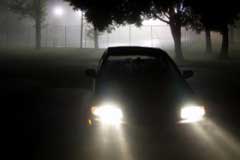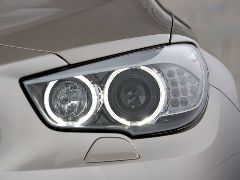Tips for Driving Safe at Night - Vol.38
Sometimes driving at night just has to be done, whether it's for a business trip that runs late, or maybe you're coming home from a party and it's after dark. Night driving has significantly more risk factor involved than driving during the day; visibility is impaired, it is harder to see the road and other cars, and there is always the risk of deer or other animals leaping in front of your car. This is made even worse if it is raining, for example. However, there are plenty of ways to drive safe at night, and here are some tips on how to do it.
First of all, make sure that your headlights are always functional and get them replaced as soon as they go out. Having broken headlights is one of the worst dangers of driving, period. Night driving cannot be done without working headlights. You should also be aware of when to use your bright lights and when to keep the lights on their normal intensity. Brights should only be used when you are on open roads - never on the interstate. If you are approaching another car, always turn your brights off so that you don't blind the opposite driver.

Secondly, you should keep an eye on how fast you're driving when it's dark out. Speed is definitely important when you're driving at night because you don't want to be going too fast only to have a deer or some other animal leap out of nowhere and catch you by surprise. Deer can be one of the most fatal causes of accidents and this is especially true at night since they come out more at night. Be very careful when driving in heavily wooded areas, and always keep an eye out for animals crossing the road while monitoring the speed at which you are driving.
Finally, it is important to make sure that your wipers are also fully functional. If it happens to start raining while you are driving after dark, you definitely don't want to be caught without good wipers. If the rain starts to come down too heavily while you are driving and it is dark out, it might simply be wiser to pull over and wait out the rain. Night driving is dangerous enough as it is; adding rain to the mix makes it that much worse. Having fully functioning wiper blades is absolutely a must when it comes to driving at night, because you never know when rain may show up.
Ultimately, it is very important to make sure your headlights are in good condition, that you monitor the speed at which you're driving, and that you have good wiper blades when you're driving at night. Know the rules for how to use your brights and make sure that you are always aware of the speed limit. Do not go too fast in wooded areas or winding roads where there may be deer and other wildlife about. If you are on the interstate, don't use your brights at all.

By following these rules, you can ensure that you have a safe driving experience if you are out late at night and have to drive after dark. If possible, driving at night should be avoided when it can. Driving when visibility is impaired by lack of light or by rain is always a thing that is best avoided, so try to make all your driving be done in the day instead. This way you will minimize the risk of accidents, harm and injury to yourself, your family, and your vehicle.